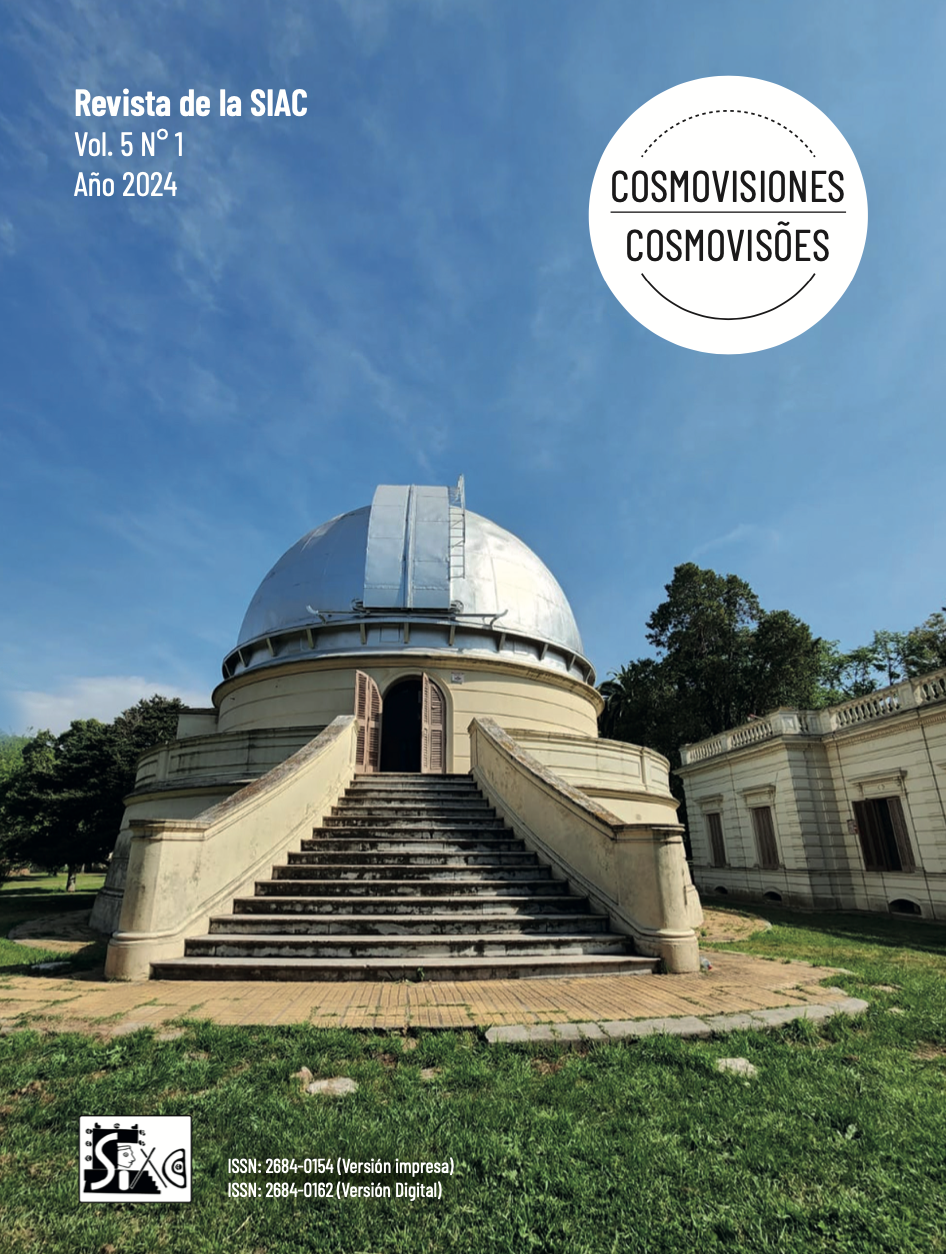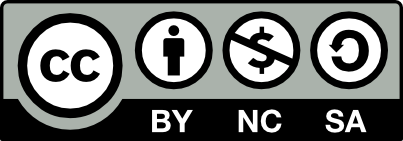The daily recording of sunsets from the dotted crosses of Acalpixca and Atlapulco in Xochimilco, Mexico City
DOI:
https://doi.org/10.24215/26840162e017Keywords:
sunsets, pecked crosses, Cerro San Miguel, observation with the naked eye, volcán AjuscoAbstract
Here we present an analysis of the Pecked Crosses from a perspective based on naked-eye observation of solar sunsets, from the center of the cruciform designs, and the descent of the Sun on prominent hills, already detected in other studies of the Cuenca de Mexico, which were occupied to record calendar dates, such as the Preclassic site of Cuicuilco and the Postclassic site of Tenochtitlan. To the west of Mexico City, the San Miguel Hill and the Ajusco volcano, belonging to the mountain range of Cruces, were important promontories that were part of the indigenous worldview, with relevance comparable to the volcanoes of the east, such as Popocatépetl and Iztaccíhuatl. On them important rites of request for rain and fertility were carried out and to date are the scenes of these Catholic syncretic practices of the wooden crosses visited on the day of the Holy Cross and other dates by the residents of the nearby settlements.
The study began by counting the holes in the pecked crosses to see if they have a calendrical value. Located in the crosses and pyramids, the sunsets were observed, recording the dates on which the Sun descended at relevant points. The azimuths of the Sun were also measured. their axes with a compass and the height of their horizons towards which their lines are directed with a clisimeter. In the case of pyramidal structures, the theodolite was used to measure their orientations, obtaining interesting results.
What we found is that in one of the ACA 2 crosses the points contained in its design add up to 253, a number very close to the ritual calendar count of 260 days, and that the axes of the crosses mark twice the date of the zenithal transit, dates of the Cuicuilco horizon and the alignment at sunset of the Templo Mayor of Tenochtitlán. We detected a very relevant sequence of days that makes us think that the positions of the Sun seen from the pecked crosses were used to locate the points of the territory where the pyramids were to be built, based on the sunsets of certain days, according to a daily sequence previously observed. Reusing as observation points the Pecked Crosses located in the mountainous area of Acalpixca and Atlapulco, to orient the pyramidal structures in the Postclassic sites (Barrio del Huacal and Barrio de Tenezcalco). This proposal is different from that of Aveni, who measures the orientation of the axes of the crosses and sees that the azimuths of the petroglyph coincide with the degrees of deviation of the urban layout of Teotihuacan and thinks that the cruciform designs were used to orient the city.
Downloads
References
Aveni, Anthony. (2005) Observadores del cielo en el México antiguo, Fondo de Cultura Económica, México.
Aveni, A. F, y Hartung, H. (1985) Las cruces punteadas en Mesoamérica: Versión Actualizada. Cuadernos de Arquitectura Mesoamericana4: 3-14
Aveni Anthony, Hartung y Buckingham. (1978) “ThePecked Cross Symbol in Ancient Mesoamérica”, Revista Science vol. 202. Pp.267-279.
Cook de Leonard, Carmen (1955)“Una maqueta prehispánica”, en El México Antiguo, tomo VIII, Pp.169-191, México.
Chavero Alfredo et al (1884-1889) México a través de los Siglos, Barcelona, espasa y cía. México, Ballesca y Cía. 5 v, ils.
Galindo Trejo, J. (2003) La astronomía prehispánica en México. En Meraz, C. (ed.) Lajas Celestes: astronomía e historia en Chapultepec. México: CONACULTA. Patronato del Museo Nacional de Historia. UNAM-México. Pp. 5-87.
Iwaniszewski, S. (1991). “La arqueología y la astronomía en Teotihuacan”. En Arqueoastronomía y Etnoastronomia en Mesoamérica Johanna Broda, Stanislao Iwaniszewski y Lucrecia Maupomé (eds). Instituto de Investigaciones Históricas, UNAM, México. Pp. 269-289.
Iwaniszewski, S. (2018) Tres marcadores calendáricos en Cocotitlán. Edo. De México. Estudios Latinoamericanos 38: 25-45.
León Garcilazo, B. (2021) Los marcadores astronómicos del sitio de petroglifos “Presa de la Luz”, en el municipio de Jesús María, Jalisco, México. Tesis de Licenciatura en física. Ciudad de México: Facultad de Ciencias. UNAM.
Olvera Hernández, Antonio (2023) Marcadores punteados en el México prehispánico: El núcleo duro de una antigua y compartida tradición rupestre, Tesis de Licenciatura en Arqueología, Escuela Nacional de Antropología e Historia, México.
Palacio Sardinetas, José Roberto (2021) El sitio Altepemilpan: Evidencia de un asentamiento Posclásico situado en la zona cerril de Xochimilco y Milpa Alta. Tesis para obtener el grado de Licenciado en Arqueología. Escuela Nacional de Antropología e Historia. INAH, México.
Sahagún, B. de (1981) Historia General de las cosas de la Nueva España. 4 tomos. México: Editorial Porrúa.
Sprajc, Ivan (2001) “Orientaciones en la arquitectura prehispánica del centro de México”, serie Arqueología, Instituto Nacional de Antropología e Historia, México.
Zimbrón Romero, J. R. (1992) Las cruces punteadas de Santa Cruz Acalpixcan, Xochimilco. Cuadernos de Arquitectura Mesoamericana 19: 59-74.
Zimbrón Romero, J. R. (2013) Los Calendarios de Horizonte en sitios prehispánicos e iglesias coloniales de Xochimilco y Milpa Alta. Tesis de Doctorado en estudios arqueológicos. México: ENAH/INAH/SEP.
Zimbrón Romero, J. R. (2020) Guía para la visita a los sitios xochimilcas de Cuahilama y Xilotepec. México: Ediciones Fuente Cultural.
Downloads
Published
How to Cite
Issue
Section
License
Copyright (c) 2024 Juan Rafael Zimbrón Romero

This work is licensed under a Creative Commons Attribution-NonCommercial-ShareAlike 4.0 International License.
Authors who publish in this journal agree to the following terms:
The authors retain intellectual authorship of the work and guarantee the journal the right to be the first publication of the work.
Authors may share the work with acknowledgment of authorship and the initial publication in this journal.
Authors may separately establish additional agreements for the non-exclusive distribution of the version of the work published in the journal (for example, placing it in an institutional repository or publishing it in a book), with an acknowledgment of its initial publication in this journal.
The journal offers free access ("open access") to all its content. The articles are available to be read, downloaded, copied, printed and/or researched according to the Creative Commons license: CC BY-NC-SA (Attribution - Non-Commercial - Share Alike-4.0 International)

The content of the journal is fully available from its publication. Readers are required to correctly cite the journal and the author of the downloaded content
















